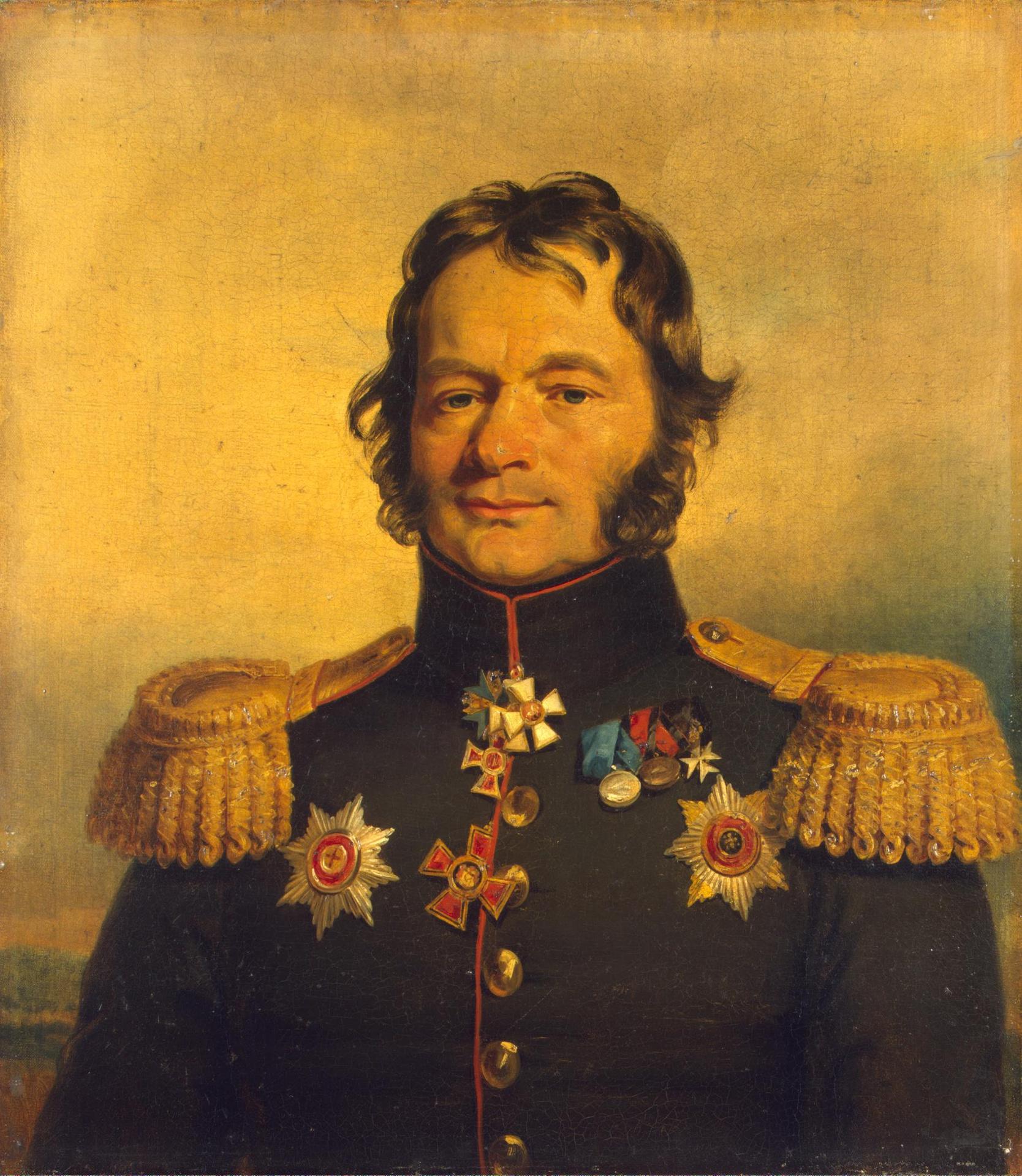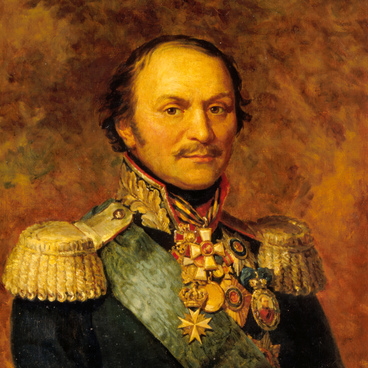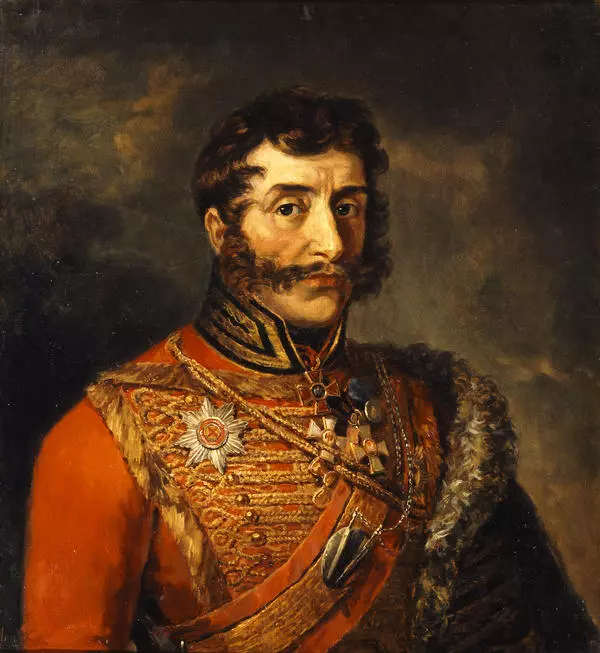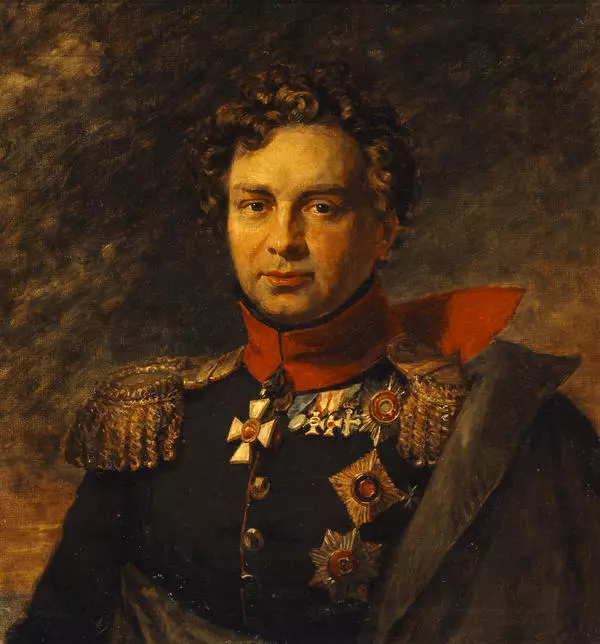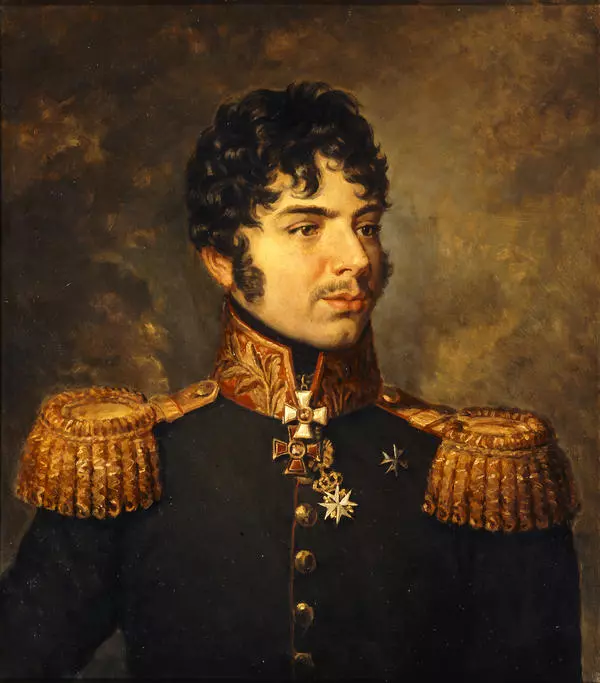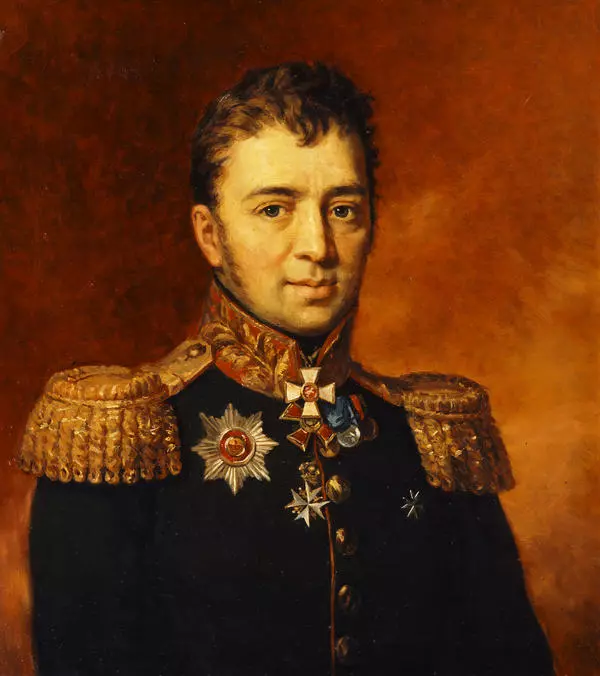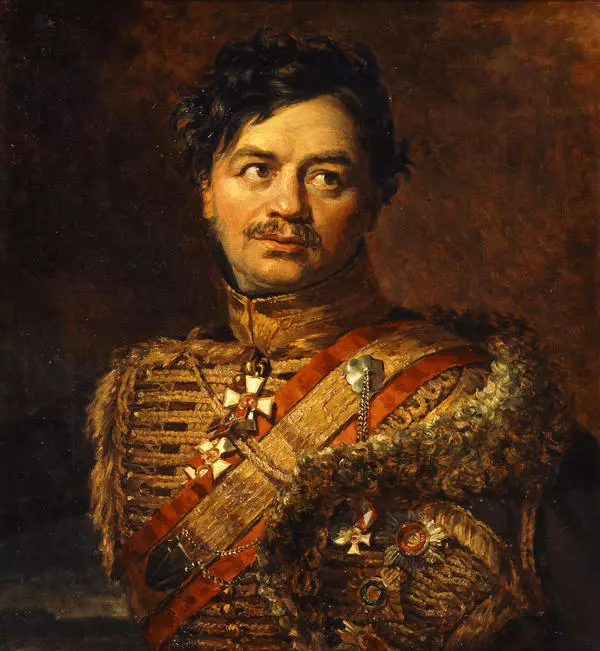Vassily Kostenetsky came from the Chernigov Province nobility. He received education in the Artillery and Engineering Szlachetny Cadet Corps in Saint Petersburg where from he graduated in 1786 as a bayonet-junker to join the 2nd Cannonier Regiment.
Kostenetsky participated in the war with Turkey of 1788–1789, was distinguished at Ochakovo assault, for what he was inducted into the rank of Sub-Lieutenant. In 1798, Kostenetsky was conferred colonelship and transferred to the Guard.
During campaigns against France, he got a few awards: the Order of St George, 4th Class – for distinguished conduct in the Battle of Austerlitz in 1805, Order of St Vladimir, 3rd Class – for the Battle of Friedland in 1807. In 1808, Kostenetsky was awarded the rank of Major General.
From the beginning of 1812, the General commanded the Artillery with the 6th Infantry Corps. He approved himself in the Battle of Smolensk on 4-6 August, for which he was awarded the Order of St Anna, 1st Class.
There were many tales about Kostenetsky’s physical strength: he easily unbent horseshoes, doubled silver rubles. In the army, they called him Vassily the Great for his giant stature, heroic might and courage. One of the stories has relation to the Battle of Borodino.
On August 26, General Kostenetsky first led a brigade from the Libavsky and Sofia Infantry Regiments, and, after the death of General Alexander Kutaysov, acted as the commander of the whole Russian Artillery.
While Kostenetsky was inside one of the batteries, it was attacked by Polish Uhlans. There was no infantry protection close at hand, and the cannons could easily go over to the enemy. So Kostenetsky grabbed the fire swab – a heavy long brush for cleaning the gun tube – and started to brandish it knocking the Polish off their horses. After another knock, the fire swab wooden shaft cracked. But the Uhlans, baffled with such reception, had already withdrawn. Soon, covering force came to the battery and the enemy finally retreated.
They said that, when after the battle Emperor Alexander I asked how he could express his gratitude to Kostenetsky, the general asked, for a joke, to introduce iron fire swaps in the artillery. The monarch answered in the same joking manner: “I can easily do it, but where I find such Kostenetskys to master them!”
For distinguished conduct in the Battle of Borodino, Vassily Kostenetsky was awarded the Order of St George, 3rd Class. At the final stage of the war, the General participated in the battles of Spas-Kuplya, Tarutino, Maloyaroslavets, and Krasny. For the fight at Spas-Kuplya, he was awarded a gold sword with diamonds “For Courage”.
During foreign campaigns of 1813–1814, Kostenetsky commanded artillery branches of various corpses and took part in all the main battles where he was three times contused. In 1826, he was awarded the rank of General Lieutenant.
At the same time, in the mid 1820s, his portrait was painted for the Military Gallery in Saint Petersburg. Portraits of military commanders, heroes of the Patriotic War of 1928 were created in the studio of English painter George Dawe. Museum-Panorama “Battle of Borodino” holds the Kostenetsky’s portrait copy of 1964.
Kostenetsky participated in the war with Turkey of 1788–1789, was distinguished at Ochakovo assault, for what he was inducted into the rank of Sub-Lieutenant. In 1798, Kostenetsky was conferred colonelship and transferred to the Guard.
During campaigns against France, he got a few awards: the Order of St George, 4th Class – for distinguished conduct in the Battle of Austerlitz in 1805, Order of St Vladimir, 3rd Class – for the Battle of Friedland in 1807. In 1808, Kostenetsky was awarded the rank of Major General.
From the beginning of 1812, the General commanded the Artillery with the 6th Infantry Corps. He approved himself in the Battle of Smolensk on 4-6 August, for which he was awarded the Order of St Anna, 1st Class.
There were many tales about Kostenetsky’s physical strength: he easily unbent horseshoes, doubled silver rubles. In the army, they called him Vassily the Great for his giant stature, heroic might and courage. One of the stories has relation to the Battle of Borodino.
On August 26, General Kostenetsky first led a brigade from the Libavsky and Sofia Infantry Regiments, and, after the death of General Alexander Kutaysov, acted as the commander of the whole Russian Artillery.
While Kostenetsky was inside one of the batteries, it was attacked by Polish Uhlans. There was no infantry protection close at hand, and the cannons could easily go over to the enemy. So Kostenetsky grabbed the fire swab – a heavy long brush for cleaning the gun tube – and started to brandish it knocking the Polish off their horses. After another knock, the fire swab wooden shaft cracked. But the Uhlans, baffled with such reception, had already withdrawn. Soon, covering force came to the battery and the enemy finally retreated.
They said that, when after the battle Emperor Alexander I asked how he could express his gratitude to Kostenetsky, the general asked, for a joke, to introduce iron fire swaps in the artillery. The monarch answered in the same joking manner: “I can easily do it, but where I find such Kostenetskys to master them!”
For distinguished conduct in the Battle of Borodino, Vassily Kostenetsky was awarded the Order of St George, 3rd Class. At the final stage of the war, the General participated in the battles of Spas-Kuplya, Tarutino, Maloyaroslavets, and Krasny. For the fight at Spas-Kuplya, he was awarded a gold sword with diamonds “For Courage”.
During foreign campaigns of 1813–1814, Kostenetsky commanded artillery branches of various corpses and took part in all the main battles where he was three times contused. In 1826, he was awarded the rank of General Lieutenant.
At the same time, in the mid 1820s, his portrait was painted for the Military Gallery in Saint Petersburg. Portraits of military commanders, heroes of the Patriotic War of 1928 were created in the studio of English painter George Dawe. Museum-Panorama “Battle of Borodino” holds the Kostenetsky’s portrait copy of 1964.


